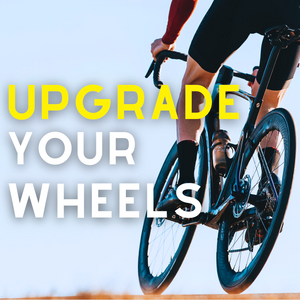
Biomechanics of Swimming Overview
Biomechanics of Swimming Overview
As a Playtri coach, I believe that one of the best tools for helping triathletes become better swimmers are swim lessons in our Endless Pool. Unlike working with an athlete at a lake or a regular pool, we can make adjustments to an athlete’s form and give feedback quickly since the athlete and coach are always within a few feet of each other. As part of the Biomechanics of Swimming clinic, we had a few athletes get into the Endless Pool and we addressed certain aspects of their stroke after we talked about the physics of swimming and the hierarchy of swim form. At Playtri we want athletes to be able to understand why we coach the way we do and have the knowledge to improve as athletes.
Any knowledge about swimming begins with knowing the 4 different forces actively working against/with the body of the swimmer: Gravitational Force, Buoyancy Force, Thrust Force, and Drag Force. Gravitational Force is the downward force that we always have working against us whether we are on dry land or in water. Buoyancy Force is the force working against gravitational force. As the swimmer’s body displaces the water around them, the water pushes up on the swimmer with a value proportional to the volume of the displaced water. Thus, if the swimmer is able to float at the surface of the water, the buoyancy force is equal in magnitude to the gravitational force. Thrust force is the force that allows the swimmer to make forward progress in the water. Generally speaking, this force is a combination of the kick and the pull. While the swimmer moves forward in the water, the water pushes back on the body of the swimmer, creating drag force. Drag force is influenced by the shape and size of the swimmer. If your legs and hips are not level with the surface of the water, but dragging behind you beneath the water, then you are creating more drag.
Simply stated, to make improvements as a swimmer, you want to:
· find the balance between gravitational force and buoyancy force so that your body is aligned near the surface of the water
· produce enough thrust force to overcome drag force so that you move faster in the water
Since you can’t change gravity or the density of water, your focus is on producing more thrust force than drag force. To do that you can either increase thrust and/or decrease drag. To decrease drag you can:
· wear a smooth swim cap
· shave your body hair
· wear a wetsuit or swim skin, depending on race rules
· eliminate/minimize folds, seams, and pockets
· and #1 on the list: improve your body position in the water. If your hips or feet are sinking, then you are creating more drag
To increase thrust you can:
· increase your kick. (Although for triathletes with limited ankle mobility, this isn’t really practical. Your kick is primarily there to help with body position)
· improve the quality of your catch and pull through the water by adjusting the shape of your hands and arms in relation to the water so that you are pushing water back toward your feet instead of pushing down on the water
Of course, there are outside influences that impact triathletes while they swim. Most of our races do not happen in a static environment like a pool. In Open Water Swimming, we are constantly dealing with waves & swells, current, sun position, physical contact with other athletes, buoy turns, sighting, and open water anxiety. All this impact our ability to hold a consistent stroke and body position. Thus, we work with our athletes to have:
· a light kick that helps with buoyancy, but has the ability to react with speed as needed
· a higher arm turnover to increase the number of catches and pulls
· a same-sided breath once per stroke cycle to help with the breath and decrease anxiety
Because of these impacts and stroke changes, we have a hierarchy for swim form. When working with a swimmer, the first thing I look at is body position. Are the back of their head, glutes, and heels breaking the water throughout the stroke? Then I look at their kick. Are their toes pointed, but relaxed? Is the kick small and fast from the hips or with bent knees and splaying out to the side? Next: rotation. Are they swimming flat or are they over rotating? Then, elbows and arm pits. Are their elbows up and arm pits open throughout the entire stroke? And finally, I look at the breath. Are they fully exhaling while their face is in the water or are they holding their breath? If, however, I am working with an athlete who has open water swim anxiety, I begin with the breath. Because when we hold our breath, our anxiety can increase.
The goal of any one-on-one session or workout is to make improvements even if those are incremental gains. We want the swimmers we work with to be comfortable in the water so that they work with the water and not against it, using the four different forces to their advantage and making simple adjustments to their stroke that help them improve body position, increase thrust force, and decrease drag force.
If you are interested in learning more about the various swim options we have, check us out at playtri.com/aquatics. And if you have questions about anything this article or are interested in learning about different coaching options, please reach out to me at jim.rowe@playtri.com. Happy training and racing this year!
Jim Rowe is a Playtri Level 4 Coach and Coach Education Lead, a USAT LI Certified Coach, and NASM Certified Personal Trainer who works with adult athletes of all abilities from beginners to IRONMAN World Championship qualifiers. Learn more about Jim at www.playtri.com/jim-rowe.



